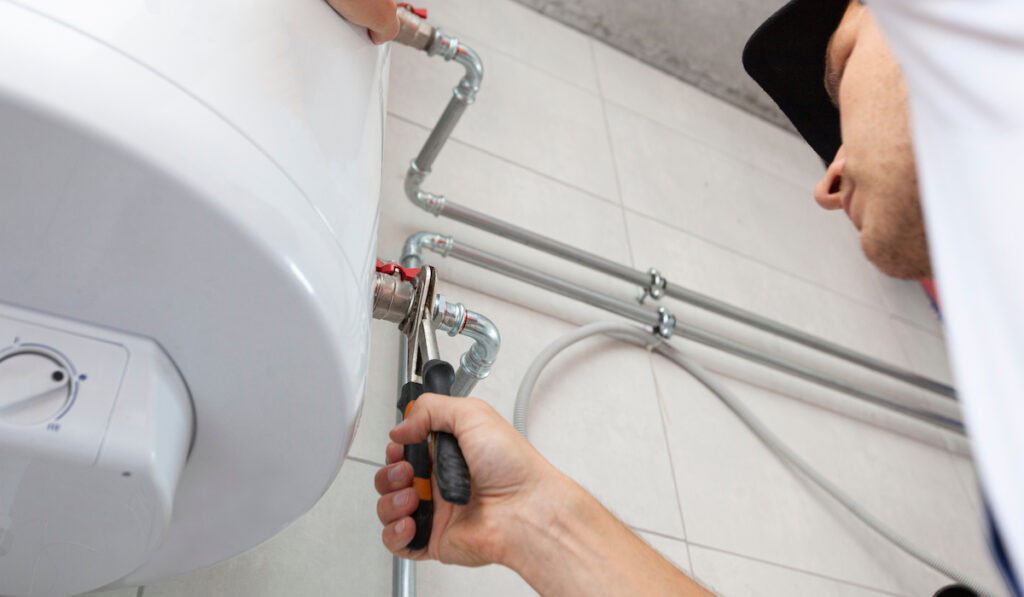Important Maintenance Tips for Your Home's Hot Water SystemSpecialist Guidance for Caring for Your Home's Hot Water System
Important Maintenance Tips for Your Home's Hot Water SystemSpecialist Guidance for Caring for Your Home's Hot Water System
Blog Article
Just about every person has their own individual notions involving How to Maintain a Hot Water Heater in a Few Simple Steps.

Warm water is essential for daily convenience, whether it's for a revitalizing shower or cleaning dishes. To ensure your hot water system runs successfully and lasts much longer, regular maintenance is crucial. This write-up provides functional pointers and insights on how to preserve your home's warm water system to avoid disruptions and expensive fixings.
Intro
Keeping your home's warm water system might seem difficult, however with a few basic actions, you can guarantee it operates smoothly for years to come. This guide covers everything from comprehending your hot water system to DIY maintenance ideas and recognizing when to call professional help.
Importance of Maintaining Your Hot Water System
Normal maintenance not only extends the lifespan of your hot water system but also ensures it operates efficiently. Ignoring upkeep can cause lowered performance, greater energy expenses, and even premature failure of the system.
Signs Your Hot Water System Needs Upkeep
Recognizing when your warm water system requires interest can avoid major issues. Look out for indicators such as irregular water temperature level, unusual noises from the heater, or corroded water.
Purging the Hot Water Heater
Purging your water heater removes debris accumulation, improving efficiency and lengthening its life.
Monitoring and Replacing Anode Rods
Anode rods prevent deterioration inside the storage tank. Checking and replacing them when worn out is critical.
Facility Problems Needing Professional Aid
Instances include significant leakages, electrical troubles, or if your hot water heater is constantly underperforming.
Routine Professional Upkeep Perks
Professional upkeep can consist of extensive evaluations, tune-ups, and guaranteeing compliance with safety and security criteria.
Evaluating and Readjusting Temperature Settings
Readjusting the temperature settings makes certain optimal efficiency and security.
DIY Tips for Upkeep
You can do several upkeep tasks on your own to keep your warm water system in top problem.
Checking for Leakages
On a regular basis examine pipelines and connections for leakages, as these can result in water damage and greater bills.
Comprehending Your Warm Water System
Before diving right into maintenance jobs, it's useful to recognize the fundamental parts of your hot water system. Commonly, this includes the hot water heater itself, pipes, anode poles, and temperature controls.
Regular Monthly Maintenance Tasks
Regular month-to-month checks can help capture minor issues prior to they escalate.
Checking Pressure Alleviation Valves
Testing the pressure safety valve ensures it works correctly and stops excessive pressure accumulation.
Insulating Pipes
Protecting warm water pipes decreases warmth loss and can save power.
When to Call a Specialist
While DIY maintenance is valuable, some issues call for professional competence.
Final thought
Regular upkeep of your home's warm water system is essential for effectiveness, longevity, and expense financial savings. By following these ideas and recognizing when to seek professional assistance, you can make certain a dependable supply of hot water without unforeseen interruptions.
How to Maintain an Instant Hot Water Heater
Before tinkering with your hot water heater, make sure that it’s not powered on. You also have to turn off the main circuit breaker and shut off the main gas line to prevent accidents. Also turn off the water valves connected to your unit to prevent water from flowing into and out of the appliance. 2. When you’re done, you have to detach the purge valves’ caps. These look like the letter “T” and are situated on either side of the water valves. Doing so will release any pressure that has accumulated inside the valves while at the same time avoid hot water from shooting out and burning your skin. 3. When the purge valves’ caps are removed, you have to connect your hosing lines to the valves. Your unit should have come with three hoses but if it didn’t, you can purchase these things from any hardware or home repair shops. You can also get them from retail stores that sell water heating systems. Read the user’s manual and follow it to complete this task properly. When the hosing lines are connected, open the purge port’s valves. 4. You should never use harsh chemical cleaners or solutions when cleaning your unit. Make use of white vinegar instead. It should be undiluted and you’ll probably use about 2 gallons. 5. Now flush your water heater. This task should probably take about 40 minutes. We can’t give you specific directions for this because the procedure is carried out depending on the type, model and brand of your heater. With that being said, refer to the user’s manual. 6. When you’re done draining the unit, you have to turn off the purge port valves again. Remove the hosing lines that you earlier installed on each of the water valves. Put the valve caps (purge port) back in their respective places and be very careful so as not to damage the rubber discs that are found inside these caps. 7. Now that everything’s back in place, check your user’s manual again to find out how to reactivate your water heating system. 8. Once it is working, turn one of your hot water faucets on just to let air pass through the heater’s water supply pipes. Leave the tap on until water flows smoothly out of it. https://www.orrplumbing.com/blog/2014/september/how-to-maintain-an-instant-hot-water-heater/

Hopefully you liked our topic about Tips on Maintaining a Water Heater. Thanks a ton for taking a few minutes to read our content. If you please set aside a second to promote this entry if you appreciated it. Thanks a bunch for being here. Revisit us soon.
Details Here Report this page